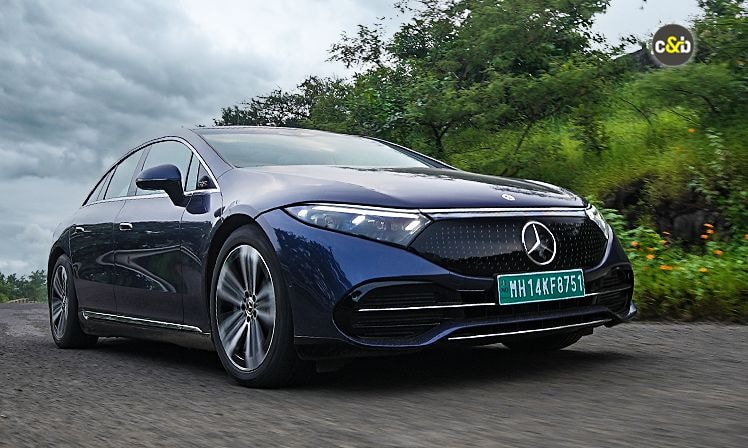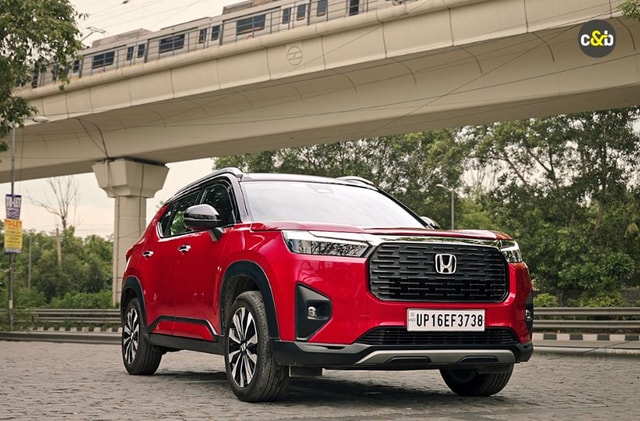Mercedes-Benz's Vision Zero Plan Intends To End Auto Accidents By 2050

- Mercedes-Benz aims to reduce accidents by 2050.
- It's trying to reduce fatal accidents by 50 per cent by 2030.
- Its PRE-SAFE platform has evolved to prepare the vehicle for utmost safety during a collision.
Mercedes-Benz has always had its focus on safety. Its research and development (R&D) department frequently keeps working on new technology concerning the safety of drivers and passengers and going forward it intends to make accident-free driving a possibility. Now we've seen even Volvo experimenting something similar with in-car cameras for accident warning and safety of cyclists and pedestrians, but the German brand seems to take it a notch up. It's PRE-SAFE platform has evolved over the period and is able to anticipate a traffic collision and will in-turn tighten the seatbelts, adjust headrests, close the windows and make other safety protocols happen immediately.
In a nutshell, it will prepare the vehicle to offer utmost safety if the car senses a collision situation. The two-box system which is a combination of ESP and an electromechanical brake booster, a crucial component for electric cars in particular, skips the negative pressure generated by a combustion engine that is then fed to a conventional brake booster. The system's rapid build-up of brake pressure enables short braking distances during automatic emergency braking. Moreover, modern Mercedes-Benz cars will be equipped with over 40 active safety assist systems like active distance assist or Distronic which an adaptive cruise control system and, active steering assist and active lane assist among others.
Mercedes-Benz is also working on increasing the safety of back-seat passengers. The rear section of the cabin in Mercedes-Benz cars are equipped with seatbelt tensioners, side airbags and the window bags. Ultra-premium cars like the S-Class also get frontal airbag for back-seat. The Belt Bag increases the area of the seat belt and can reduce impacts on passengers' upper body, contributing to greater safety in the rear. There is also the seat cushion airbag, which is designed to prevent passengers from slipping below the lower belt, even if the passenger has laid their seat back.
The company is aiming to achieve accident-free driving and recently its R&D has been expanded to China and India as well. It goes without saying that from autonomous brake control and lane assist have undergone continuous improvements. It researchers aim to reduce the number of serious injuries and traffic fatalities by 2030 by at least 50 per cent to what its was in 2020. The system will analyze vehicle data and identify city roads that have safety issues. It is already working with authorities in London to see how information from the Mercedes-Benz Road Safety Dashboard can be used to identify high risk urban locations.
Latest News
 Carandbike Team | Jan 5, 2026Mahindra XUV 7XO Launch LIVE Updates: Price, Features, Specifications, Images1 min read
Carandbike Team | Jan 5, 2026Mahindra XUV 7XO Launch LIVE Updates: Price, Features, Specifications, Images1 min read Bilal Firfiray | Jan 5, 2026Volkswagen Reveals Electric Polo Cabin; Previews Future Interior PhilosophyVolkswagen has previewed its next-gen, customer-driven ID. cockpit in the near-production ID. Polo concept, blending intuitive physical controls, recycled materials, one-pedal driving and retro Golf-inspired digital dials.1 min read
Bilal Firfiray | Jan 5, 2026Volkswagen Reveals Electric Polo Cabin; Previews Future Interior PhilosophyVolkswagen has previewed its next-gen, customer-driven ID. cockpit in the near-production ID. Polo concept, blending intuitive physical controls, recycled materials, one-pedal driving and retro Golf-inspired digital dials.1 min read car&bike Team | Jan 5, 2026JSW MG Motor India Sells 46,735 Windsor EVs In CY2025; EV Sales Up By 111%The carmaker closed CY2025 with overall growth of 19 per cent, while its EV sales grew by 111 per cent compared to CY2024.2 mins read
car&bike Team | Jan 5, 2026JSW MG Motor India Sells 46,735 Windsor EVs In CY2025; EV Sales Up By 111%The carmaker closed CY2025 with overall growth of 19 per cent, while its EV sales grew by 111 per cent compared to CY2024.2 mins read car&bike Team | Jan 5, 2026Honda Elevate, City Offered With Discounts Of Up To Rs 1.76 Lakh In Jan 2026The new Amaze is being offered with benefits of up to Rs 60,000.1 min read
car&bike Team | Jan 5, 2026Honda Elevate, City Offered With Discounts Of Up To Rs 1.76 Lakh In Jan 2026The new Amaze is being offered with benefits of up to Rs 60,000.1 min read Carandbike Team | Jan 5, 2026Yamaha R15 Range Offered With Rs 5,000 DiscountAs part of Yamaha’s 70th anniversary celebrations, the brand has slashed prices for the R15 model range.2 mins read
Carandbike Team | Jan 5, 2026Yamaha R15 Range Offered With Rs 5,000 DiscountAs part of Yamaha’s 70th anniversary celebrations, the brand has slashed prices for the R15 model range.2 mins read car&bike Team | Jan 4, 2026Auto Sales December 2025: Mahindra Edges Out Tata To No. 2, Hyundai Drops To Fourth In Domestic SalesMaruti Suzuki remained firmly in the lead with domestic sales north of 1.7 lakh units - a 37 per cent sales growth year-on-year.1 min read
car&bike Team | Jan 4, 2026Auto Sales December 2025: Mahindra Edges Out Tata To No. 2, Hyundai Drops To Fourth In Domestic SalesMaruti Suzuki remained firmly in the lead with domestic sales north of 1.7 lakh units - a 37 per cent sales growth year-on-year.1 min read
 Amaan Ahmed | Jan 3, 2026VLF Mobster 135 300 KM Review: Fun But FlawedA 125 cc scooter with Italian design and Chinese genes is a rare combination, and while some may be tempted to dismiss it because of its origins, the VLF Mobster shows 125s can also be exciting – but not without compromises.1 min read
Amaan Ahmed | Jan 3, 2026VLF Mobster 135 300 KM Review: Fun But FlawedA 125 cc scooter with Italian design and Chinese genes is a rare combination, and while some may be tempted to dismiss it because of its origins, the VLF Mobster shows 125s can also be exciting – but not without compromises.1 min read Preetam Bora | Dec 30, 2025TVS Orbiter Review: Real-World Performance and Range TestedThe TVS Orbiter is a promising electric scooter promising decent range, practicality and pricing. But is there any reason to avoid it? We spent a few days getting to know it better.9 mins read
Preetam Bora | Dec 30, 2025TVS Orbiter Review: Real-World Performance and Range TestedThe TVS Orbiter is a promising electric scooter promising decent range, practicality and pricing. But is there any reason to avoid it? We spent a few days getting to know it better.9 mins read Jafar Rizvi | Dec 24, 2025MG Windsor EV 38 kWh Long-Term Report: IntroductionThe Windsor EV has joined our garage, and before it settles into daily duty, I took it out to get a sense of what living with an electric car is like.4 mins read
Jafar Rizvi | Dec 24, 2025MG Windsor EV 38 kWh Long-Term Report: IntroductionThe Windsor EV has joined our garage, and before it settles into daily duty, I took it out to get a sense of what living with an electric car is like.4 mins read Seshan Vijayraghvan | Dec 23, 20252026 Kia Seltos Review: Formula Is Spot On, But Is The Timing Right?The 2nd-gen Kia Seltos has arrived, but it has the challenge of facing strong rivals like the Victoris and Sierra. The question is simple - Does it still have what it takes?9 mins read
Seshan Vijayraghvan | Dec 23, 20252026 Kia Seltos Review: Formula Is Spot On, But Is The Timing Right?The 2nd-gen Kia Seltos has arrived, but it has the challenge of facing strong rivals like the Victoris and Sierra. The question is simple - Does it still have what it takes?9 mins read car&bike Team | Dec 26, 2025Tata Punch EV Long-Term Second Report: Highway Performance, Pros & ConsAfter a week of living with the Tata Punch EV Long Range—including a proper Mumbai-Nashik highway test—we've learned what this little electric SUV is really made of.1 min read
car&bike Team | Dec 26, 2025Tata Punch EV Long-Term Second Report: Highway Performance, Pros & ConsAfter a week of living with the Tata Punch EV Long Range—including a proper Mumbai-Nashik highway test—we've learned what this little electric SUV is really made of.1 min read
























































































































